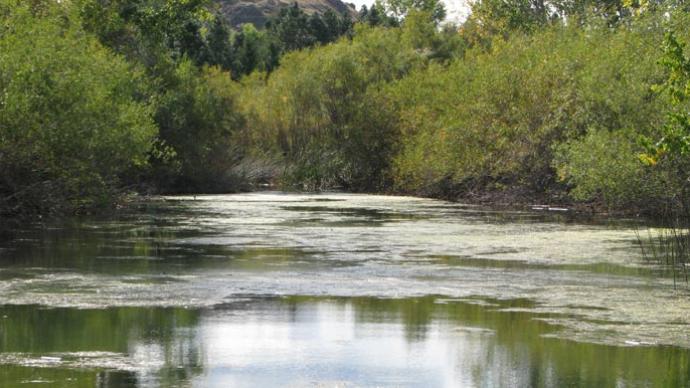If watching for low dissolved oxygen and largemouth bass virus were not enough to keep you busy, pond owners must guard against yet another potential fish-killer - golden algae.
This tiny, golden-brown protist occurs naturally in brackish waters that are high in nutrients, and has been blamed in recent years for killing thousands of fish in numerous public reservoirs. Golden algae has killed fish in the Brazos, Pecos, Red and Colorado River drainages, along with the Dundee Fish Hatchery near Wichita Falls.
As recently as last February, the mysterious algae, first identified in Texas waters in 1985, was blamed for a die-off in at least one pond owned by the City of Midland.
"Fish come to floundering to the top, as if they're gasping for air," said Texas Parks and Wildlife Inland Fisheries Division Chief Phil Durocher. "We have identified golden algae in so many public rivers and reservoirs, we have no reason to believe it won't be a problem in private ponds, especially where the water has a high sodium content and high nutrients."
To date, golden algae has not been a significant problem in other parts of the U.S., but researchers with the TP&W say it has threatened aquaculture operations from Denmark to Japan to Scotland to Australia.
"If a pond owner sees fish that could be in trouble from golden algae, report it," Durocher said. "We need to know about it."
Golden algae first attracted attention from the scientific community in Israel in the 1950s. More recently, botanists at the University of New Brunswick in Canada and the University of Tsukuba in Japan have studied the species (Prymnesium parzum). Unfortunately, scientists in the U.S. are learning more about golden algae only after it kills fish.
"We don't know why it crops up," said Joan Glass of the TP&W Kills and Spills Team, "but we're starting to see some reliable predictors."
Here is a summary of golden algae, and what biologists can tell pond owners:
- The algae has yet to be a menace in states other than Texas, though "I can't believe Texas will be the only place it shows up," Glass said.
- The plant kills by depleting the water of oxygen. Algea blooms produce oxygen during the day but consume it at night. Affected fish often die in the early hours of the morning. The decay process of a dying bloom, as well as depleting oxygen by bacterial respiration, can produce ammonia, sulphides and other toxins harmful to fish. "In essence," Glass said, "the fish drowns."
- Other symptoms include red sores at the base of the fins or bloody gills. "It's a slow, ugly way to die," Glass said.
- Fish killed by golden algae are safe to eat. Field researchers have arrived at the scene of a die-off in progress, and found numerous species of birds and mammals - sea gulls, herons, vultures, cats, coyotes, stray dogs - eating the fish, with no ill effects.
- Golden algae tends to flourish in a wide variety of water chemistries, but always where the pH reading is 7 or above.
- Mammals may drink the water where golden algae has bloomed, with no apparent problems.
- The algae is highly tolerant to temperature variance. In the field, biologists have found it growing in 115-degree water in the Devil's River system, and along the Oklahoma-Texas border, in temperatures as low as 34-36 degrees.
- Once the plant blooms, it remains rather hardy. Golden algae plants have been documented to live 3-to-4 weeks in a refrigerator. A fish-kill in the Pecos River started in 1985 below Red Bluff Reservoir, located northwest of Odessa, and by 1988 had spread a distance of 187 miles, to the upper reaches of Lake Amistad. "It never really stopped killing fish," Glass said.
- While individual plants may not be seen except under the 1,000-X magnification of research-strength microscopes, the microscopic plants give the water a brass or golden tint when they form floating patches or blooms.
- Golden algae is an equal-opportunity killer. When golden algae blooms, all fish species, from minnows to catfish and striped bass, in or near the bloom become vulnerable.
- In Israel, researchers have controlled golden algae outbreaks in culture ponds by treating the water with ammonia. These are small, self-contained systems, Glass said. Such treatments would not be economically feasible, or biologically prudent, in large bodies of water, Durocher said.
Reprinted with permission from Pond Boss Magazine


